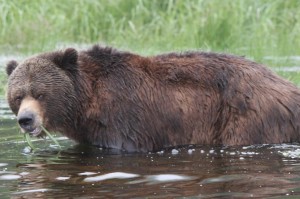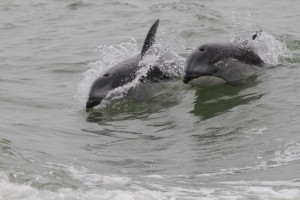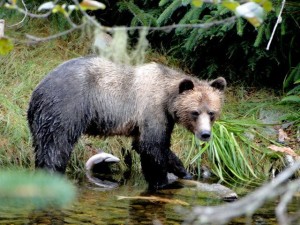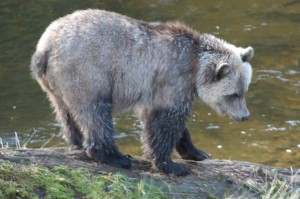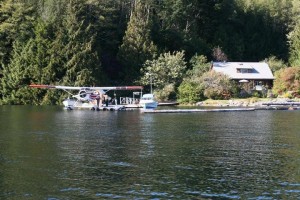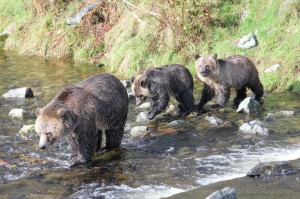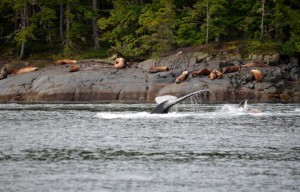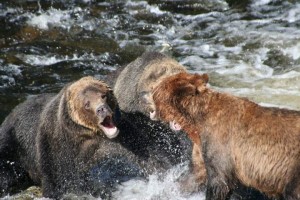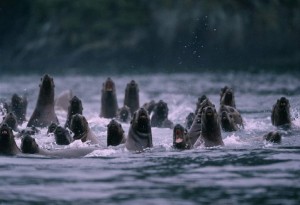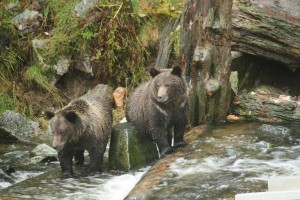
These two juvenile sibling grizzly bears are waiting for a chance to move out into the river to fish for salmon. Being young they need to time their fishing to avoid the older males and the mothers with cubs. The area Grizzly Bear Lodge use on Knight Inlet for its tours has more than forty bears but there is such an abundance of food little fighting occurs and it is more about a bear timing its approach to the river. From the size of these bears bellies they seem to be successful and should have no trouble reaching a weight which will carry them through hibernation.
